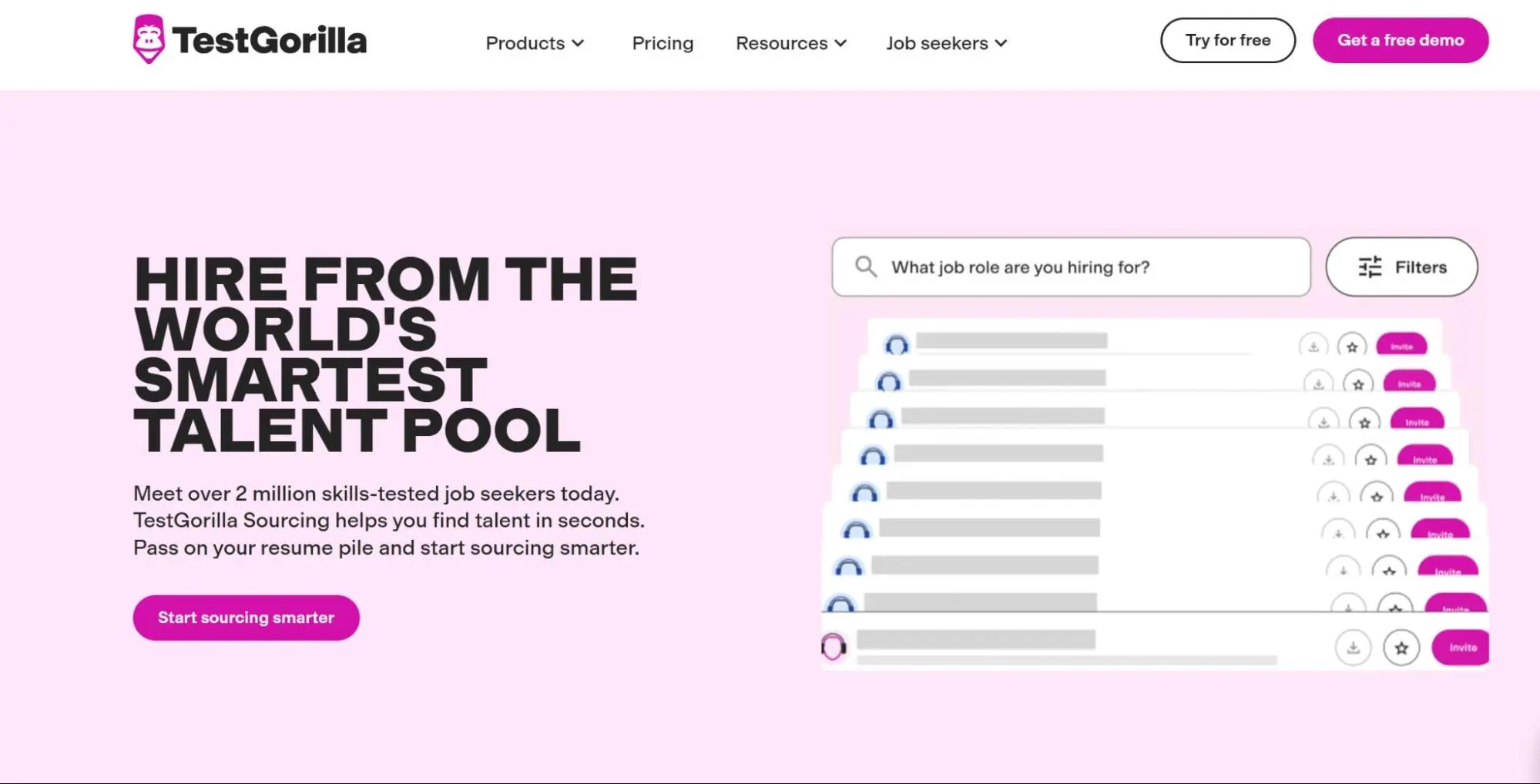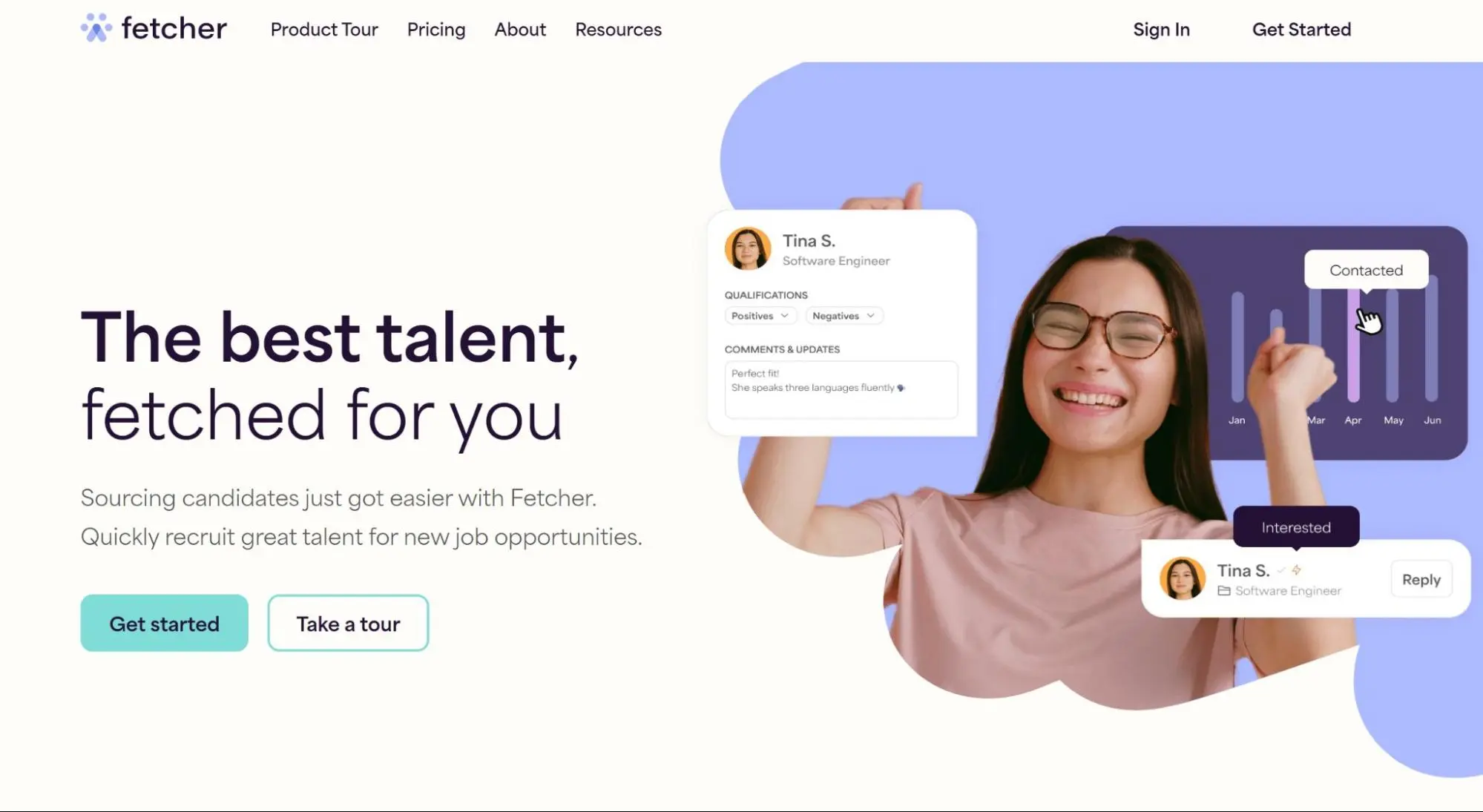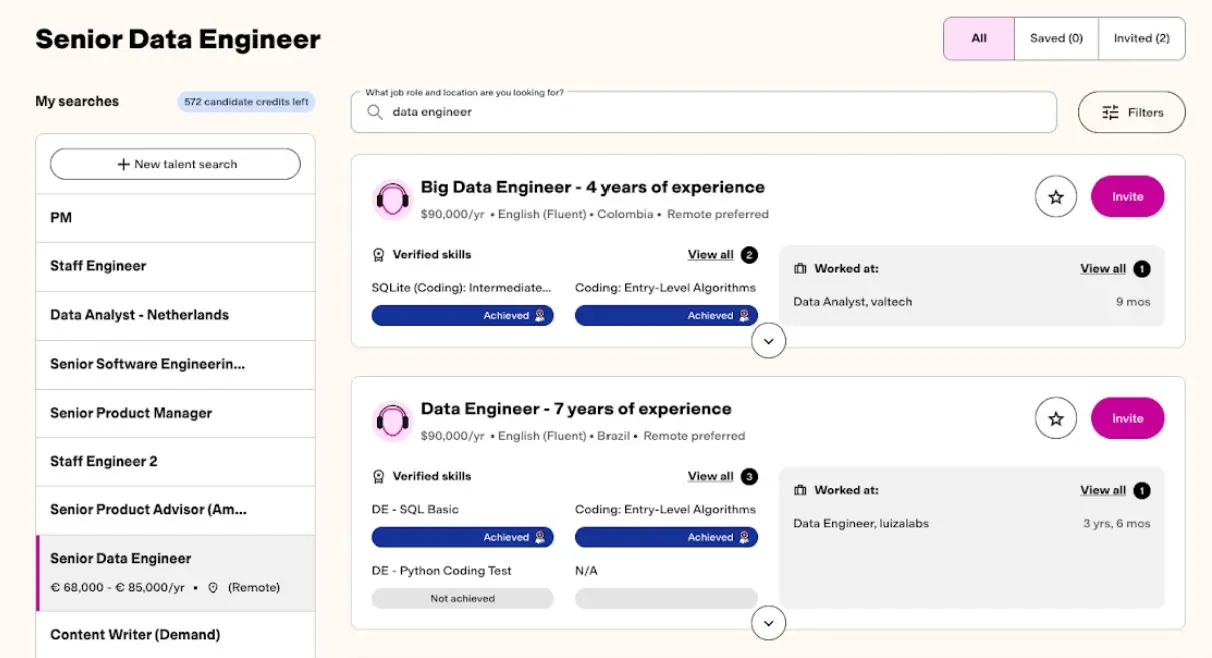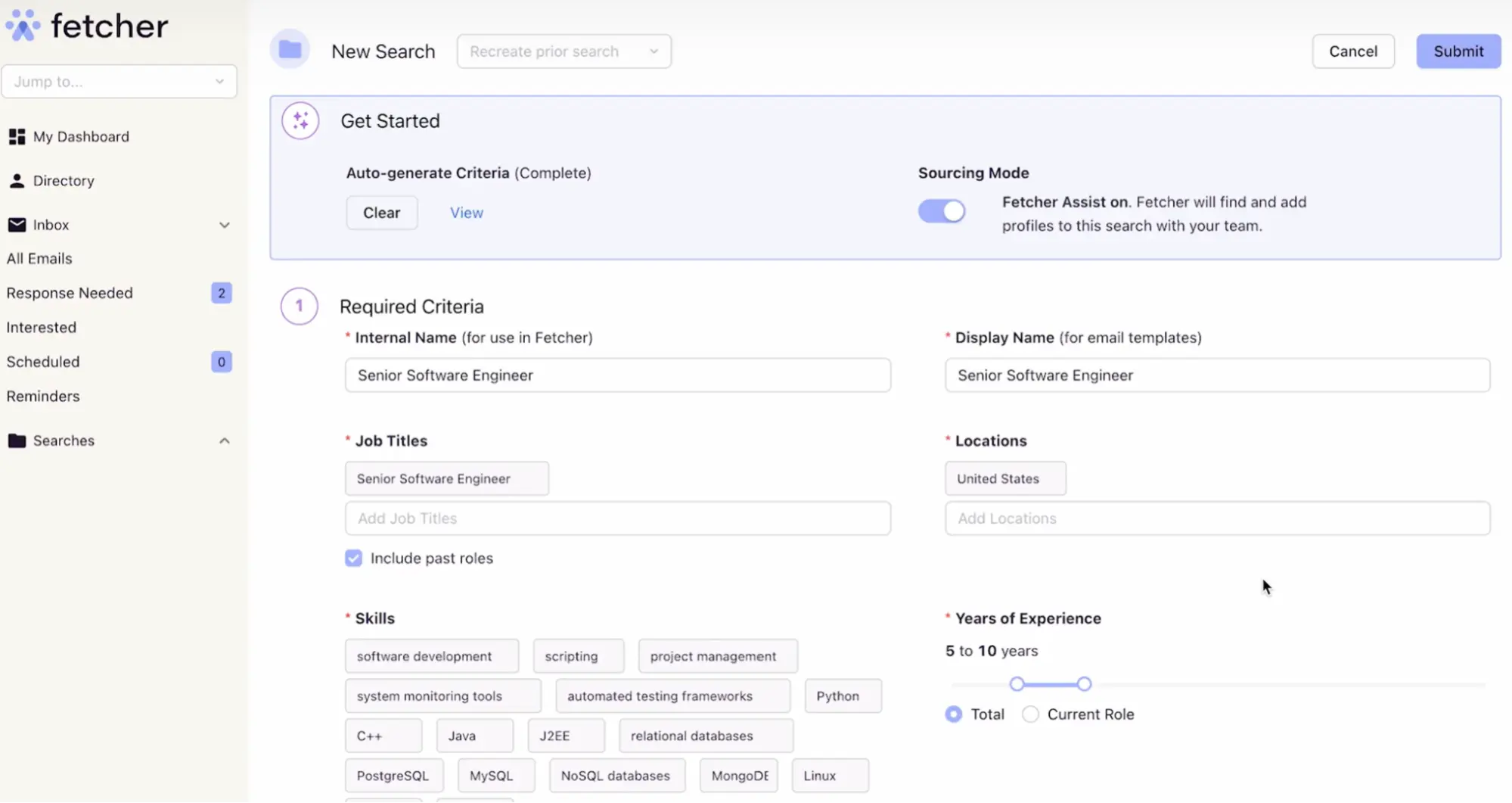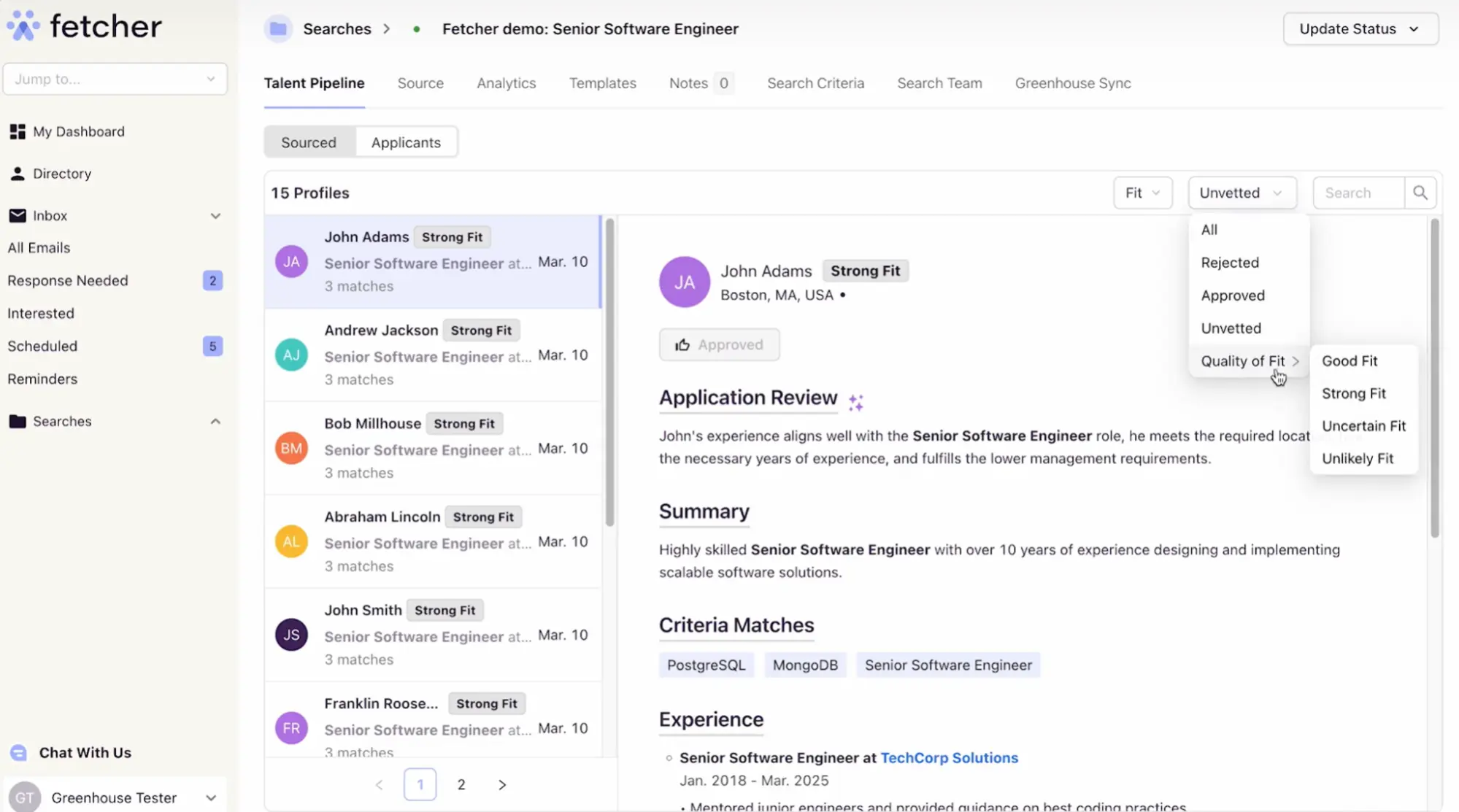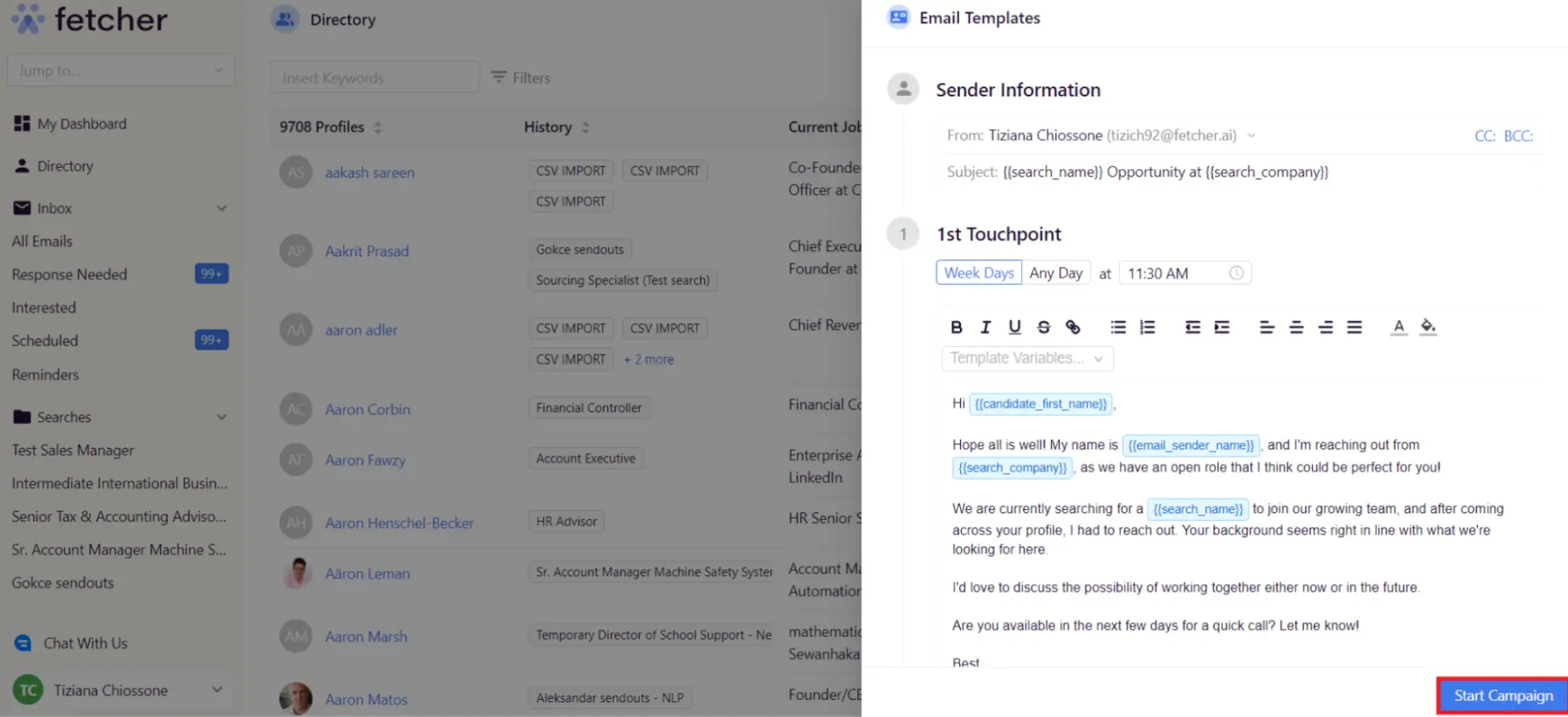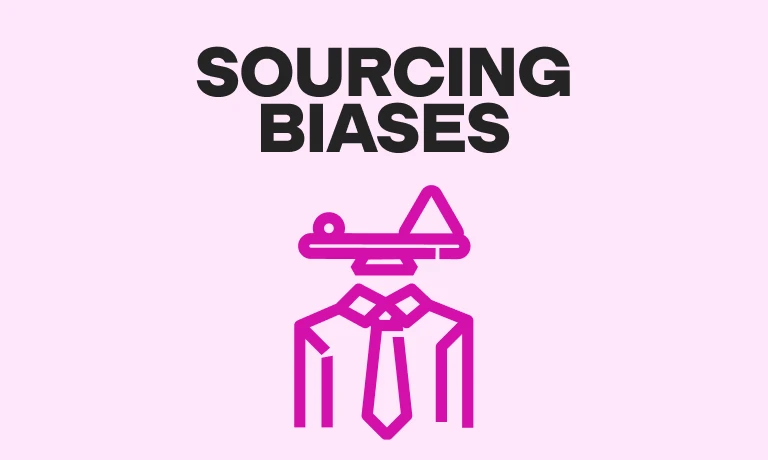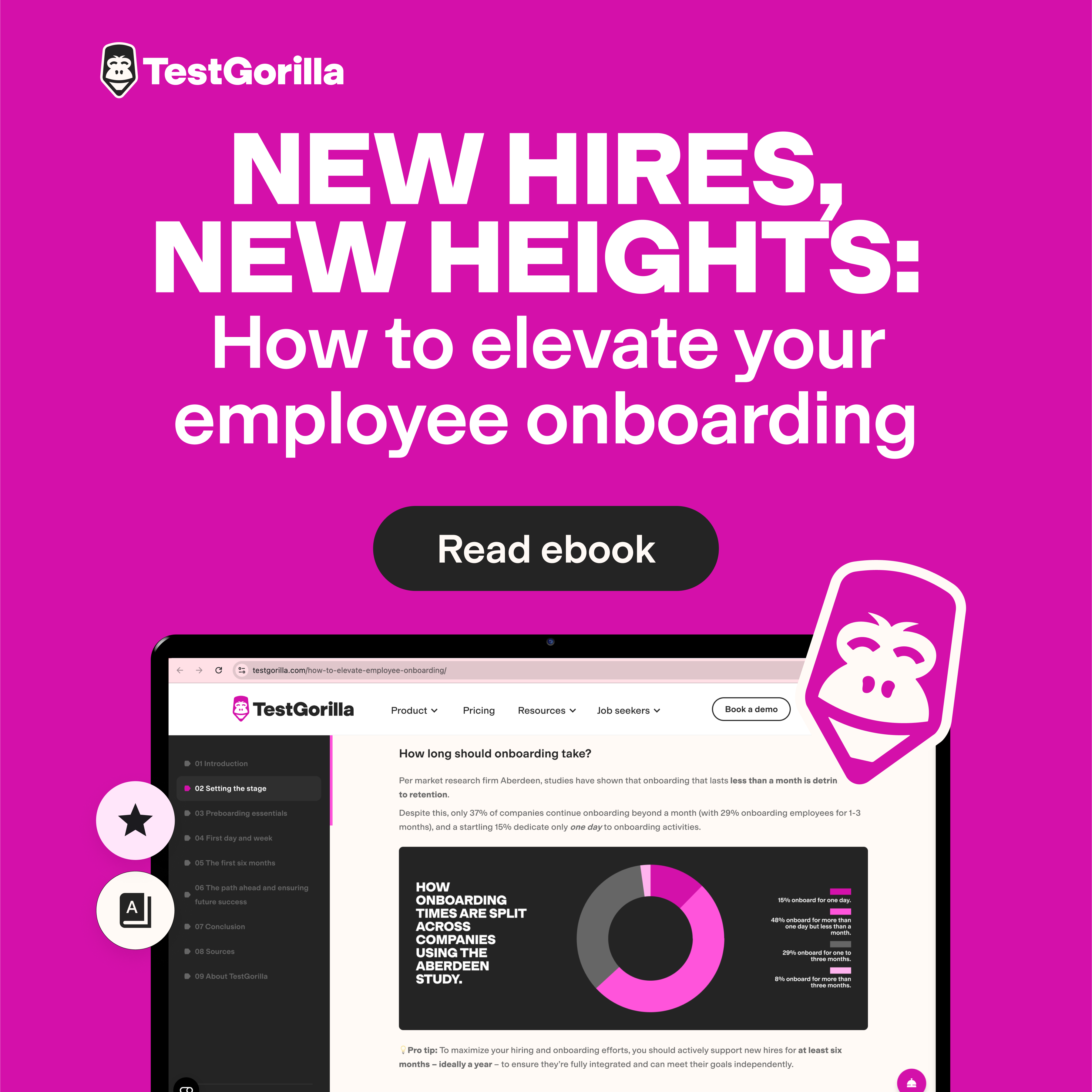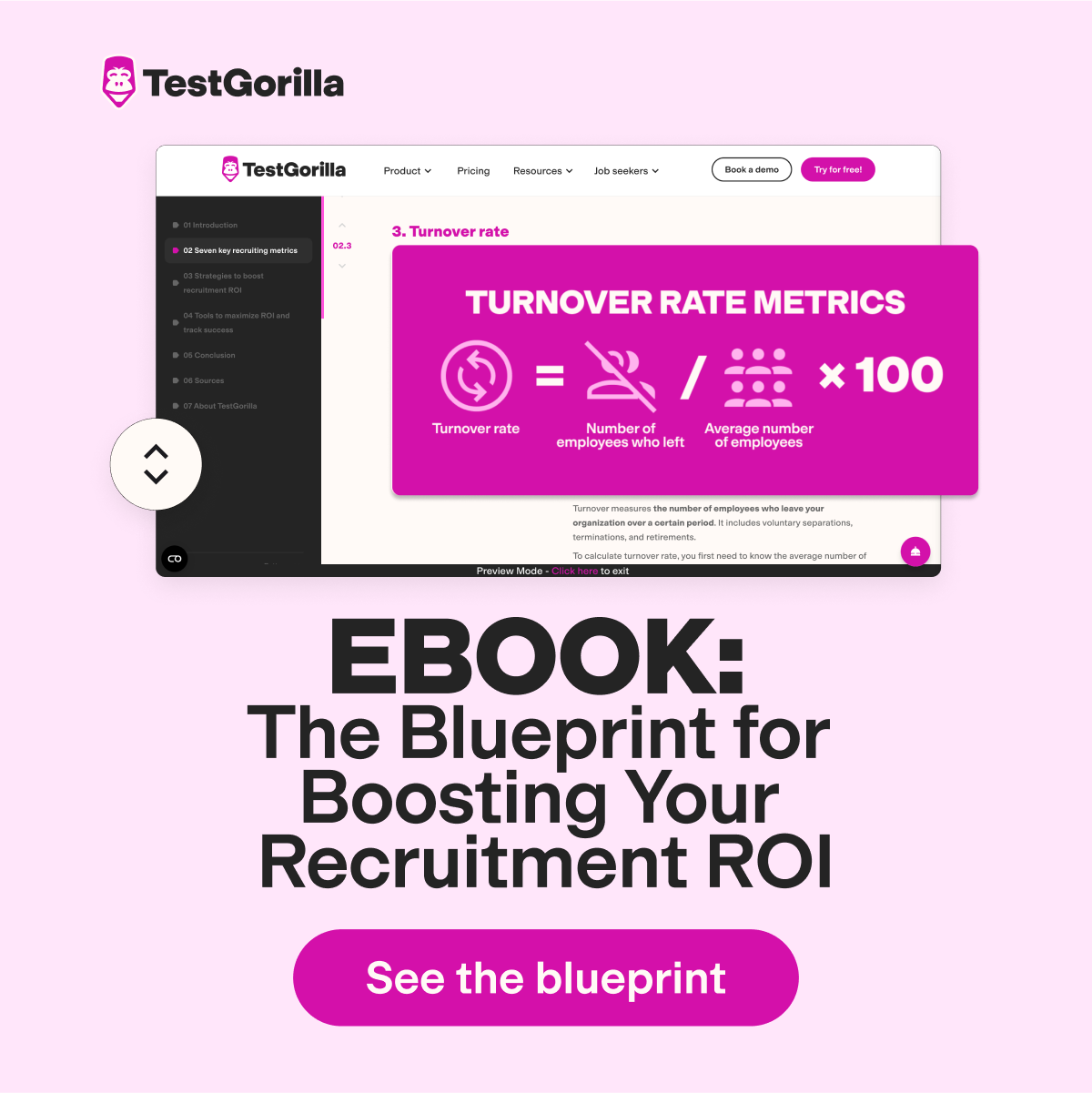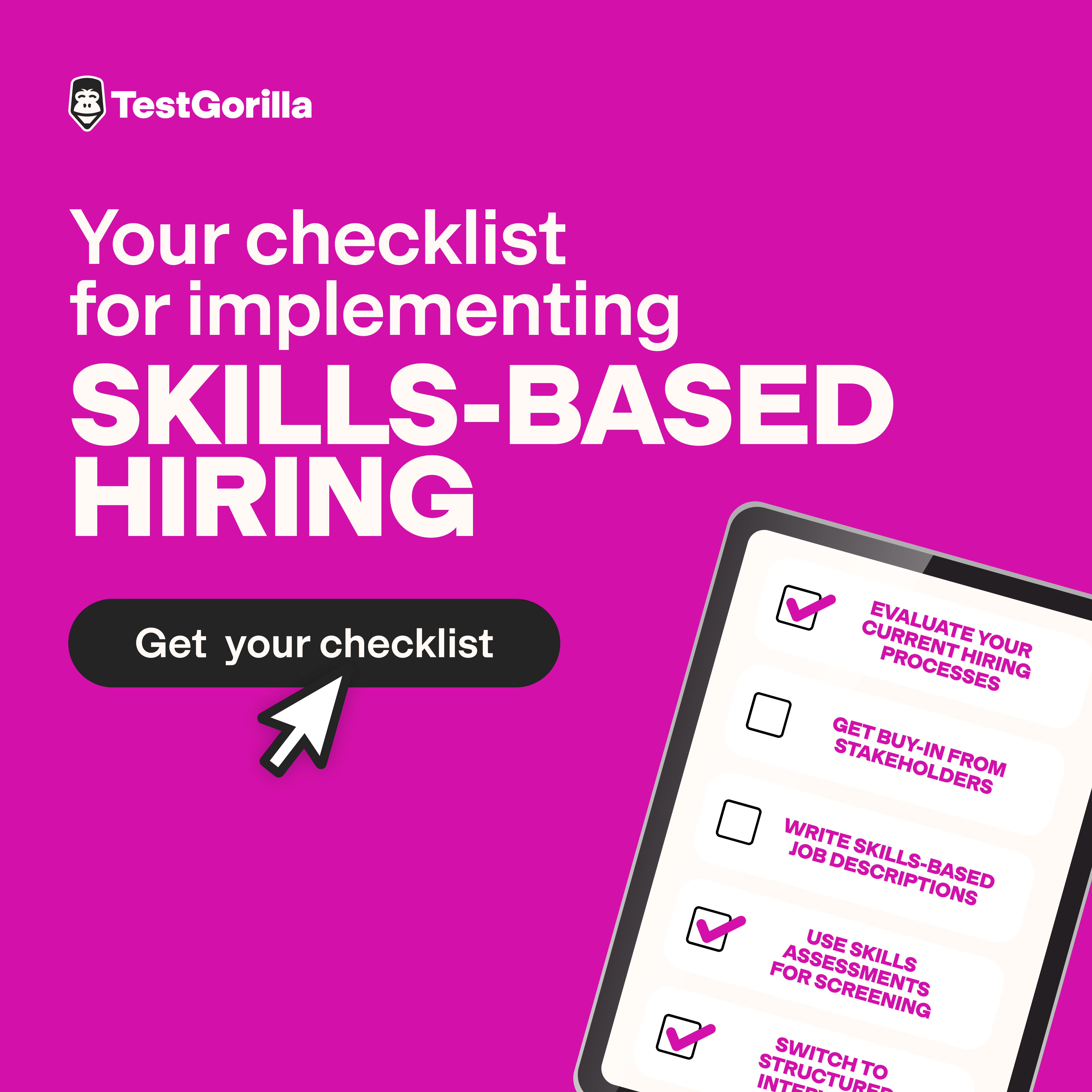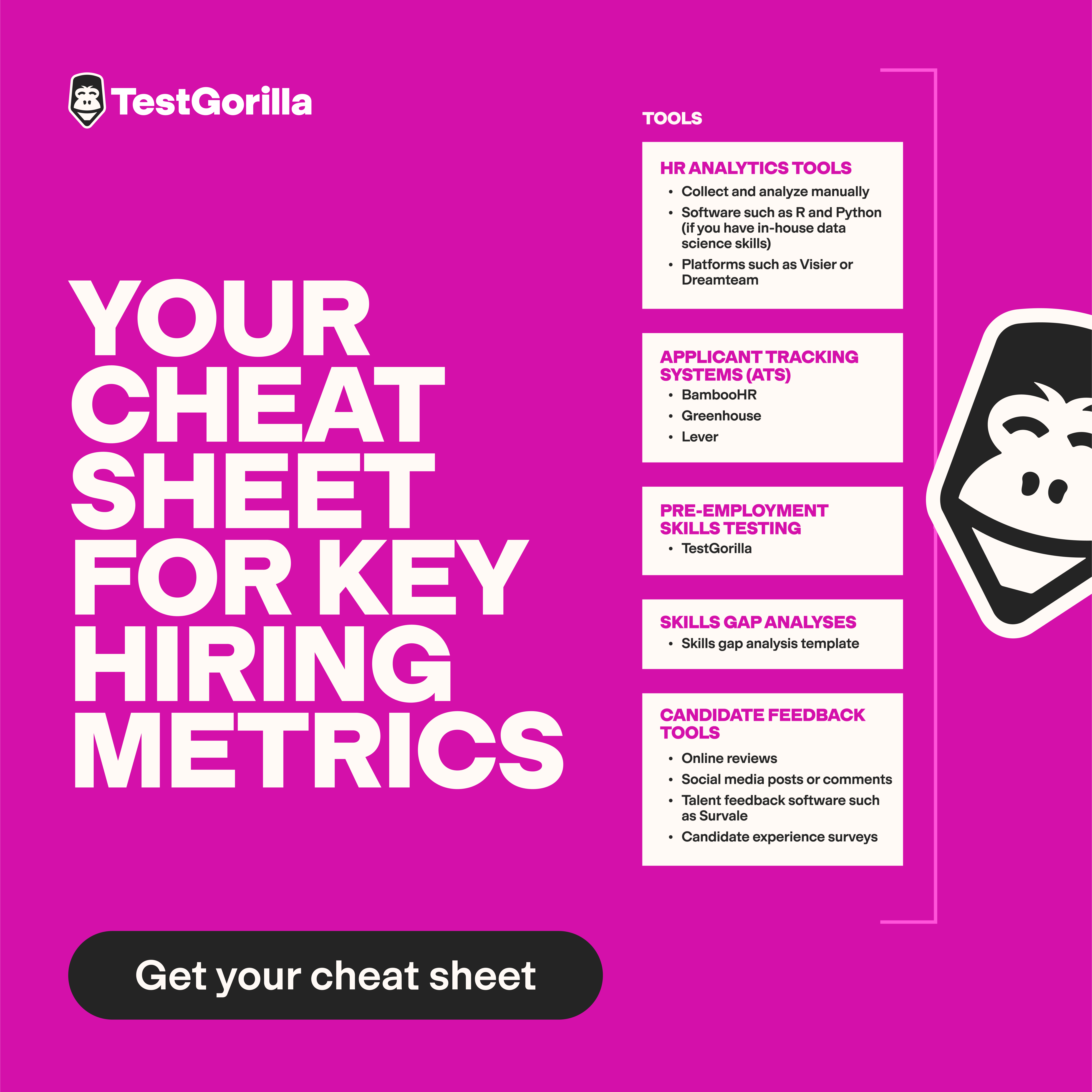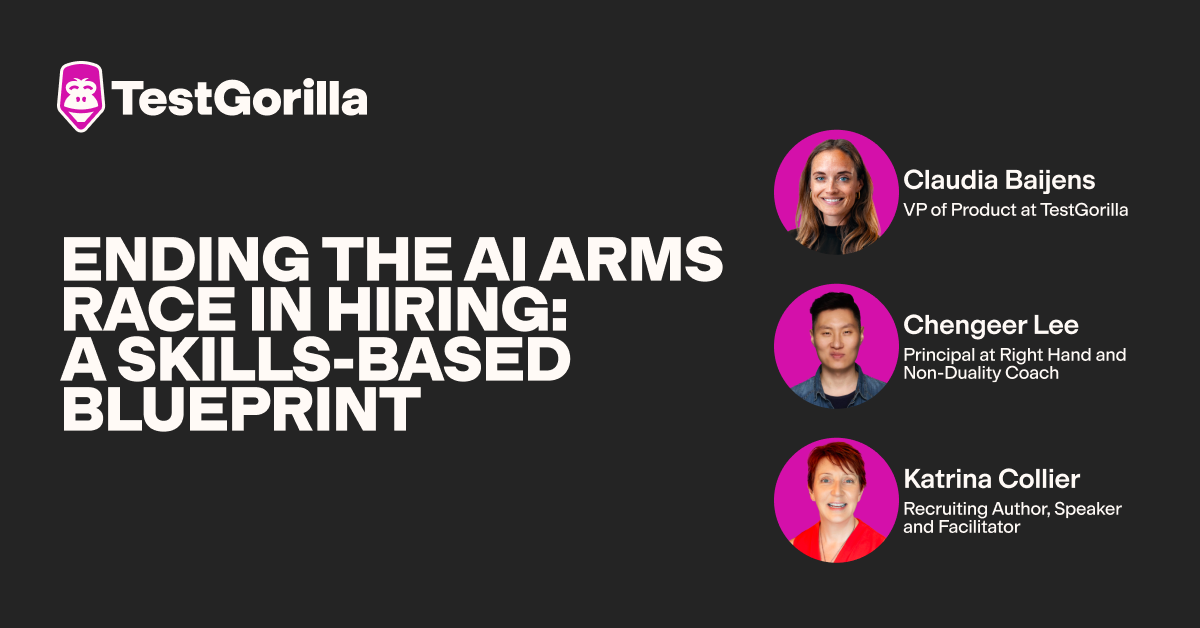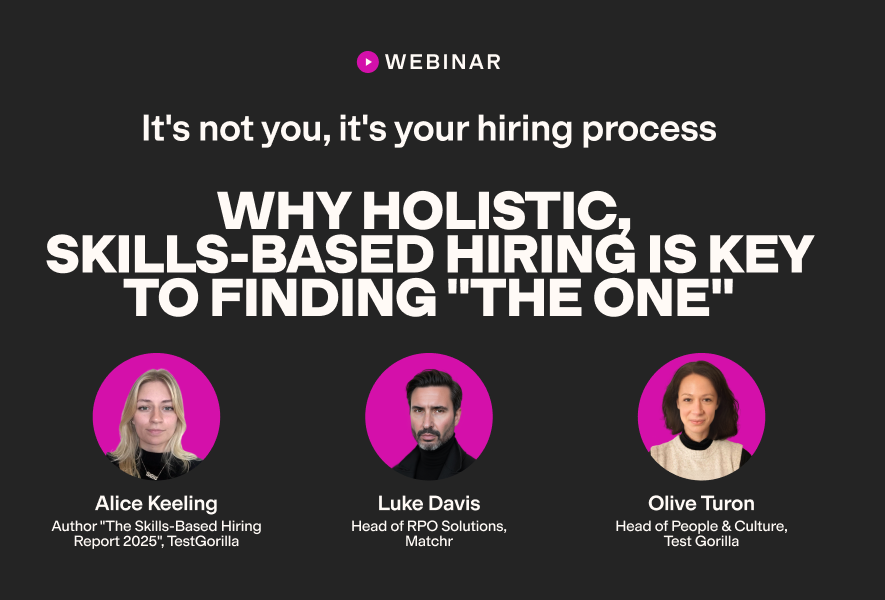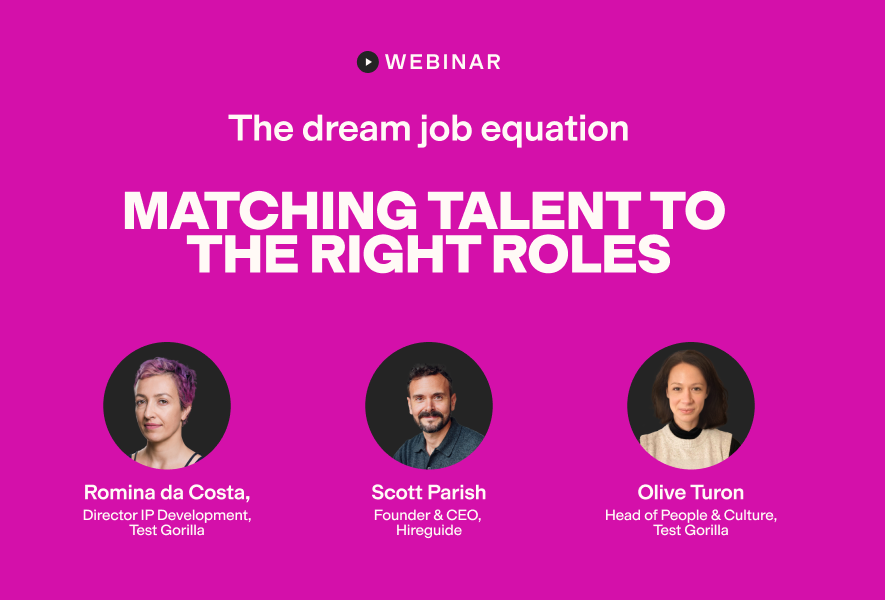TestGorilla and Fetcher both promise to help you source the best talent – but they go about it in very different ways.
TestGorilla’s AI-powered sourcing solution focuses on skills so you can surface top candidates, while Fetcher leans on a combination of AI, automation, and human recruiters.
This TestGorilla vs. Fetcher comparison guide puts the two sourcing platforms head-to-head so you can decide which is right for your needs.
Table of contents
- What is TestGorilla?
- What is Fetcher?
- TestGorilla vs. Fetcher: Talent sourcing
- TestGorilla vs. Fetcher: Candidate engagement
- TestGorilla vs. Fetcher: Analytics & reporting
- TestGorilla vs. Fetcher: Candidate experience & company branding
- TestGorilla vs. Fetcher: Pricing
- TestGorilla vs. Fetcher: Customer support
- Verdict: TestGorilla vs. Fetcher
What is TestGorilla?
Launched in Amsterdam in 2019, TestGorilla is a talent discovery and assessment platform that helps companies find and evaluate candidates based on real skills.
TestGorilla’s two main offerings are TestGorilla Sourcing, which helps teams discover and engage qualified talent, and TestGorilla Assessments, which enables hiring teams and recruiters to measure candidates’ skills using science-backed tests, AI video interviews, custom questions, and more.
TestGorilla Sourcing homepage
TestGorilla also offers a public Job Board, where candidates can showcase their verified skills and match directly with companies that have open roles.
What is Fetcher?
Based in New York, Fetcher is a talent sourcing platform that launched in 2014. It uses a combination of automated sourcing and human recruiters to help companies quickly find large numbers of qualified candidates.
Fetcher also offers engagement tools to help hiring managers and recruiters reach out to candidates and encourage them to apply for roles.
Fetcher’s homepage
The best insights on HR and recruitment, delivered to your inbox.
Biweekly updates. No spam. Unsubscribe any time.
TestGorilla vs. Fetcher: Talent sourcing
TestGorilla’s discovery & matching
TestGorilla gives you access to a database of more than two million pre-vetted candidates, all of whom have completed one or more TestGorilla skills assessments. That means you’re seeing candidates who’ve proven their abilities, not just those with a polished resume. Every candidate in the database has also opted in, indicating they’re interested in applying for open roles that fit their skills and experience.
Starting a skills-first talent search is straightforward. Enter the basics of your role: the title, job description, salary range, and location (including a remote work option). You can then narrow your search for candidates by region, salary expectations, skills tests they’ve completed, and more. You can stack up to six test filters to focus on the skills that matter most for your job.
From there, TestGorilla’s AI automatically surfaces candidates who best fit your search. This ensures you see only strong matches and have a chance to surface hidden talent that might not appear in traditional sourcing.
TestGorilla uses AI to automatically surface pre-assessed candidates who have the skills needed for your role.
For each candidate the AI suggests, you can view a profile that shows up to six skills tests they’ve taken – either their highest-scoring tests or tests relevant to your role.
Test results are displayed as both a raw score (the percentage of correct answers) and as a percentile score that compares their performance to the average performance of other candidates who’ve taken the same test. Scores remain valid for up to a year, depending on the test, and candidates can retake tests after three months to update their results.
Each profile also shows details that candidates shared with TestGorilla when they joined the database, including their work history, location, and desired salary. You won’t see candidates’ names or photos until you invite them to apply for your role, which helps keep bias out of the sourcing process.
You can favorite candidates to create a shortlist, download profiles, or send an email inviting them to apply to your role. TestGorilla Sourcing is fully integrated with TestGorilla Assessments, so you can add an additional skills assessment to your invitation and require candidates to complete it as the first step in your application process.
Plus, TestGorilla provides collaboration tools for your hiring team. Each paid TestGorilla account comes with multiple seats, so different members of your team can review sourced candidates. In addition, your team members can leave comments and ratings for candidates who have completed assessments.
Everything is easy to navigate within TestGorilla. You can manage every step – setting filters, reviewing profiles, and sending invitations – all from the same clean, modern interface.
Fetcher’s discovery & matching
Fetcher offers access to a database of around 500 million candidates. The company doesn’t specify how this database was assembled or whether candidates opted into it.
To begin a candidate search, enter your job description, and Fetcher’s AI automatically generates search parameters – such as desired skills and past job titles, years of experience, and location – from it. You can also adjust these parameters manually.
Fetcher’s AI then scans the database to find candidates who meet your criteria and labels each one as a “Strong,” “Good,” “Uncertain,” or “Unlikely” fit. But there’s little transparency around these ratings; there’s no information on verified skills fit, work history, location, or other factors. It can be hard to tell exactly what Fetcher’s AI bases its ratings on.
You can begin a talent search in Fetcher by entering your job description. Fetcher uses AI to generate parameters for your search.
Beyond AI sourcing, Fetcher has a team of human talent sourcers who identify candidates in the database or on LinkedIn who might be a good fit for your position. These human-sourced candidates are automatically added to your list of AI-suggested candidates for you to review, and Fetcher’s AI will assign them the same type of fit rating.
Fetcher also offers a Chrome extension that lets you import candidates’ LinkedIn profiles into Fetcher. Fetcher’s AI then scans the imported information to extract details about candidates’ skills and work history. This lets you manually add talent to your search and review them alongside talent discovered by Fetcher’s AI or human team.
When reviewing matches in Fetcher, you see full candidate profiles, including names and photos. The platform enables you to add candidates to a shortlist and download their profiles, and override the AI’s fit ratings with your own. However, Fetcher doesn’t offer any tools to support collaboration within your hiring team.
Fetcher automatically rates each candidate’s fit for your role using AI.
Fetcher is relatively easy to use, but you have to connect it to your applicant tracking system (ATS) to source candidates. As one user said, this “initial setup can be a bit challenging.” Also, the interface can feel crowded when sourcing talent for multiple job openings.
Talent sourcing: Comparison chart at a glance
| TestGorilla | Fetcher |
Candidate database | 2 million candidates who have taken at least 1 TestGorilla assessment and opted in | 500 million candidates; unclear source |
AI-powered talent matching | Yes (based on skills, work experience, location, desired salary, job title, and tests taken) | Yes (based on unspecified factors) |
Human sourcing | No | Yes |
Sourcing from LinkedIn | No | Yes |
Candidate filtering options | Skills, TestGorilla tests taken, location, salary, and years of experience | Skills (not verified), work history, location, and years of experience |
Skills verification | Yes | No |
Candidate review tools | Shortlists, download profiles | Shortlist, download profiles, fit scores |
TestGorilla vs. Fetcher: Candidate engagement
TestGorilla’s candidate engagement features
TestGorilla lets you email candidates directly from the platform to invite them to apply for your open positions.
You can create an invitation template that includes personalized details, such as the candidate’s name, and adjust formatting or links as needed. Each email can be edited before you send it, so it’s easy to customize it for each person.
Invitations can include a link to your job application or your hiring manager’s contact information. Notably, you can also attach a custom TestGorilla assessment, which you can create using a mix of up to five skills tests (from a library of 350+), custom questions, one-way video interviews, and AI interviews.
Emails are sent from TestGorilla’s domain to prevent them from landing in spam folders, and replies are sent straight to an email address you choose.
TestGorilla lets you send customizable invitations directly to candidates’ emails so they can apply for your role.
TestGorilla also prevents companies from poaching your active candidates within the platform. After a candidate completes an assessment for your company, they’re hidden from other businesses’ TestGorilla talent searches for three weeks. Hired candidates are automatically removed from the database.
Fetcher’s candidate engagement features
Likewise, Fetcher lets you contact candidates via email from within the platform. You can create custom email templates from scratch or use generative AI to draft personalized emails to candidates.
Fetcher encourages a funnel-style approach to candidate communication. It suggests starting with an email to introduce your company to the candidate. This approach makes sense, since candidates in Fetcher’s database may not have opted in or be actively seeking a new job. However, it also adds more time to go from invitation to submitted application.
Fetcher offers reminders and automated emails so you can follow up with candidates who don’t respond or respond quickly to candidates who express interest in your role.
Fetcher enables you to send emails to candidates from within the platform.
These emails come from you personally, not from Fetcher, and some customers have reported that emails can end up in spam folders.
Additionally, Fetcher doesn’t offer skills assessments, so there’s no option to ask candidates to complete an evaluation.
Comparison chart
| TestGorilla | Fetcher |
Emails to candidates | Yes | Yes |
Customizable email templates | Yes | Yes |
Integrated skills assessments | Yes | No |
Emails sent from platform domain | Yes | No |
TestGorilla vs. Fetcher: Analytics & reporting
TestGorilla’s analytics & reporting tools
TestGorilla offers a detailed analytics dashboard that breaks down how far candidates you invite from Sourcing progress through your hiring process. For example, you can see what percentage of invited candidates completed an assessment and filter your data by hiring manager or role.
You can also see the average performance of candidates who’ve taken your assessments – and dive into each person’s performance on individual skills tests. Data can be exported in PDF, PNG, or Excel formats.
Fetcher’s analytics & reporting tools
Fetcher offers an analytics dashboard that shows how many candidates you’ve contacted, your candidate response rate, and the percentage of sourced candidates that moved onto the next stage of your hiring process. You can analyze this data in Fetcher or export all candidate data to Excel.
Analytics & reporting: Comparison chart at a glance
| TestGorilla | Fetcher |
Sourcing metrics | Yes | Yes |
Candidate progress tracking | Yes | Yes |
Completion rates | Yes | No |
Candidate response rates | No | Yes |
Candidate test performance insights | Yes | N/A |
Data export | Yes (PDF, PNG, Excel) | Yes (Excel) |
TestGorilla vs. Fetcher: Candidate experience & company branding
TestGorilla’s candidate experience & company branding options
TestGorilla provides a structured, smooth, and fair experience for candidates.
You won’t know a candidate’s name, what they look like, or what’s in their resume until you send an invitation. This helps prevent bias in your initial selections and outreach. Plus, it puts candidates at ease, knowing they’re being evaluated solely on their capabilities.
On a similar note, TestGorilla complies with the General Data Protection Regulation (GDPR)’s rules for data handling, so candidates can be confident the platform stores and uses their information safely.
Additionally, all invited candidates take the same skills assessment for each of your open roles, further ensuring that you compare applicants fairly. And TestGorilla automatically updates candidates on their status as your hiring process advances, so they never feel left in the dark.
The platform also makes it easy to brand invitation emails and customize assessments with your company’s logo and colors, so candidates have a consistent experience from start to finish.
Fetcher’s candidate experience & company branding options
Fetcher’s candidate experience is fairly simple.
There’s limited interaction with candidates beyond email, though you can personalize or draft emails with generative AI to make them feel more tailored. You’re also able to send automatic follow-ups to remain engaged with candidates. That said, there’s a risk that AI-generated messages could introduce bias into your early conversations.
On a positive note, Fetcher is GDPR-compliant, meaning the platform handles individuals’ data securely and transparently. This adds a nice touch to the candidate experience and can help build trust with your company.
Regarding branding, you’re able to add company branding to emails in Fetcher.
Candidate experience: Comparison chart at a glance
| TestGorilla | Fetcher |
Bias-free invitations | Yes | No |
Branded emails | Yes | Yes |
Branded skills assessments | Yes | N/A |
Candidate status updates | Yes | No |
TestGorilla vs. Fetcher: Pricing
TestGorilla’s pricing
TestGorilla has three pricing options, including a free plan. To access Sourcing, you’ll need to be on either the Core or Plus plan.
The Core plan includes full access to TestGorilla Sourcing and Assessments. It starts at $96 per month (billed annually), with 250 annual credits. That’s enough to invite up to 250 sourced candidates, assess about 80 candidates, or do a mix of both each year. The Core plan also includes two premium seats, so 1–2 users are able to create assessments, invite candidates, and handle sourcing.
You can purchase additional credits whenever you need them, and scale your Core plan up to 20,000 annual credits, which costs $2,034 per month (billed annually).
The Plus plan includes everything in Core, plus more advanced capabilities: 15+ ATS integrations, an application programming interface (API) for custom integrations, AI-powered resume scoring, one-way video interviews, conversational AI interviews, and more.
Pricing for Plus is by quote only so that TestGorilla’s team can help you get the right number of credits for your hiring needs.
Fetcher’s pricing
Fetcher has three plans: Growth, Amplify, and Enterprise. There’s no free plan available.
The Growth plan costs $499 per month ($379 per month when paid annually). It comes with all of Fetcher’s sourcing features, but limits you to 500 sourced candidates per year.
The Amplify plan costs $849 per month ($649 per month when paid annually). It lets you source up to 1,000 candidates per year.
Fetcher’s Enterprise plan is priced by quote only and lets you choose custom sourcing limits.
Fetcher is much more expensive than TestGorilla for each sourced candidate. In addition, while TestGorilla only charges a credit if you invite a sourced candidate, Fetcher charges for each candidate regardless of whether they’re a good fit for your role or not.
Pricing: Comparison chart at a glance
TestGorilla | Fetcher | ||
Plan | Price (billed annually) | Plan | Price (billed annually) |
Free | $0 | No free plan | |
Core | From $96/month (250 credits, 2 premium seats) | Growth | $379/month |
Plus | By quote only (unlimited premium seats) | Amplify | $649/month |
|
| Enterprise | By quote only |
TestGorilla vs. Fetcher: Customer support
TestGorilla’s customer support
TestGorilla offers support by email and live chat. When you sign up, you get free training and an onboarding tour – no matter what plan you’re on. Plus plan users get a dedicated customer success manager, too.
Also, all users have access to the online help center, which offers various resources, including a detailed guide to getting started with TestGorilla Sourcing.
Fetcher’s customer support
Fetcher offers support via email and live chat. Customers also get access to an online knowledge base that explains how to use the platform.
Customer support: Comparison chart at a glance
| TestGorilla | Fetcher |
Live chat support | Yes | Yes |
Email support | Yes | Yes |
Help center | Yes | Yes |
Training and onboarding tour | Yes | No |
Verdict: TestGorilla vs. Fetcher
TestGorilla and Fetcher are both capable talent sourcing platforms. Each integrates with a range of ATS systems and can help you reach out to candidates directly to invite them to apply for your role. The main difference between the two is how they source talent.
Fetcher pulls from a large database of candidates that haven’t been pre-screened. TestGorilla, on the other hand, focuses on proven job skills – giving you access to two million candidates who’ve completed skills assessments relevant to your role. You can also require candidates to complete an additional skills assessment or an AI interview with TestGorilla as part of your hiring process.
TestGorilla also caters to a wider range of businesses than Fetcher. It includes collaboration tools for startups and large hiring teams, a free plan, scalable paid plans for businesses of all sizes, and an API to support custom integrations.
Overall, TestGorilla is the superior talent sourcing platform for most businesses.
→ Ready to start finding qualified candidates? Schedule a free 30-minute live demo, or sign up for a free TestGorilla plan today.
You've scrolled this far
Why not try TestGorilla for free, and see what happens when you put skills first.


